Toyota Logistics Services is tackling capacity constraints in the export of its vehicles from the US with a new process to improve sequencing at the ports. Missy Pearlman, general manager of the business, talks about the new system, TLS’ supply chain alignment and why a culture of respect is central to the carmaker’s future

Toyota Logistics Services (TLS) was founded in 1976 as a subsidiary of Toyota Motor Sales USA, a division dedicated to processing and distributing of imported and domestic vehicles sold within the US, and also those vehicles made in the US and exported overseas.
The legacy of a dedicated logistics division is reinforced by the fact that TLS directly operates its own vehicle terminals, including inland vehicle distribution centres (VDCs) and port operations. It also runs its own dedicated finished vehicle haulage business in California – Toyota Transport – which it set up in 1988. Combined it gives the carmaker a direct working knowledge of how to improve operations and apply Toyota’s kaizen principle to the finished vehicle logistics sector, ultimately for the benefit of the end customer.
“There is no substitute for experience,” says Missy Pearlman, general manager of TLS, and when that experience is shared with logistics partners it improves the service for everyone involved.
Pearlman knows what she is talking about, having been with Toyota for almost 30 years, working across a range of logistics planning, strategy and operations roles (see biography). She returned to TLS and vehicle logistics in January this year in what Toyota called a “lateral rotation” after a stint working as general manager of project planning and management.
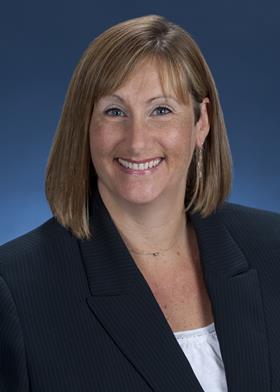
Pearlman says Toyota’s customers benefit from the close alignment of supply chain operations at the carmaker, but that alignment also provides a competitive advantage.
“We are integrating and talking to each other end-to-end along the supply chain,” says Pearlman. “From the ordering to the manufacturing, to the delivery of those vehicles – we are all aligned behind the same mission, which is to provide customers with the vehicles they want, when they want them, and [customised] the way that they want them.”
That close working relationship also goes for TLS partners. “We know what they are going through and can provide additional support and resources,” says Pearlman, a collaborative effort that has proved itself effective through the disruption of the last three years.
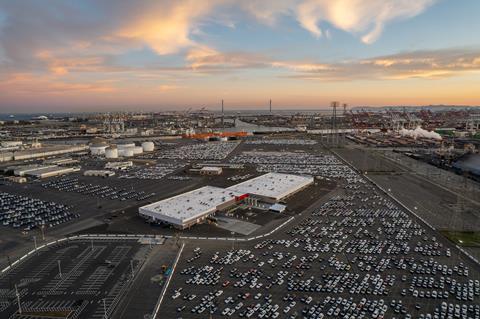
Capacity crunch
The automotive sector is still dealing with the fallout of that disruption. In the finished vehicle logistics part of the business, carmakers are dealing with delays, congestion and a lack of capacity across land and ocean transport modes. At the same time, they and their transport providers are trying to get vehicles to market as quickly as possible in a situation where demand is outstripping supply and inventories remain low.
The current shortage of pure car and truck carriers (PCTCs) is hampering international deliveries, and the movement of vehicles to and from the ports is hindered by a shortage of equipment and labour, especially vehicle haulage drivers.
The main issue for TLS as the moment is the export of vehicles made in the US to overseas markets, according to Pearlman. One of the main reasons for that is the shortage of labour at the ports. “Things are moving slower, it is taking longer for vessels to get to berth, to offload, and that compounds the challenge we already have with securing enough capacity [elsewhere],” she says.
Toyota exports vehicles through 12 port terminals in the US, with the top three being Baltimore (MD), Hueneme (CA) and Jacksonville (FL). Unlike the carmaker’s ports of import for finished vehicles – Long Beach (CA), Portland (OR) and Newark (NJ) – it does not have dedicated terminals managed in-house for export volumes. Neither does it have dedicated vessel contracts as it does for inbound volumes. That means Toyota is subject to the same delays that other carmakers are dealing with as they battle for space both inland and at sea.
“The ports get congested because they don’t have enough capacity in trucking to move them and then there is not enough space to offload,” admits Pearlman. “We are then sharing stevedoring with other business. That business is up but [port] labour is short and there are a lot of challenges that are compounding each other.”
US port terminals for Toyota exports
Baltimore (Dundalk), MD
Baltimore (Fairfield), MD
Brunswick, GA
Savannah, GA
Jacksonville (Tallyrand), FL
Jacksonville (Blount Island), FL
Port Tacoma, WA
Oakland, CA
Port Hueneme, CA
Long Beach, CA
San Diego, CA.
Reliable ETAs
To help manage the more efficient flow of products from factory to end customer, whether in the US or overseas, in the face of the current volatility, Toyota is working on a project to improve the sequencing and scheduling of vehicles at the ports.
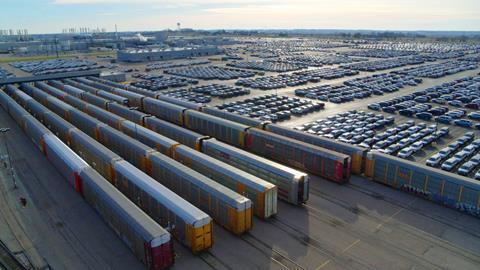
The goal is to ensure that Toyota provides accurate ETAs for the vehicles it is moving and in the process is able to learn where inefficiencies are occurring to iron them out.
“It is very important for us to be able to provide our customers and dealers with information they can trust about when they are going to get their vehicles,” notes Pearlman. “Some of that has to do with providing a reliable ETA that they can trust, but it is also about getting the vehicles there faster because the demand is there.”
The system of sequencing the vehicles is one that Toyota has used for the last 25 years but using the latest digital technology the company is now enhancing that system to do closely detailed by-the-minute scheduling, using real-time information on each stage of the schedule to sequence vehicle movements more efficiently.
“What the team has been working on in this enhancement [project] is making sure that the system has all the right information about how long each process actually takes,” says Pearlman. “They can then sequence the vehicles minute by minute to make sure we are filling up every minute of our day efficiently.”
With that more granular detail TLS can identify vehicles that are running early or late, enabling the team to make adjustments and program in improvements to increase scheduling precision and ultimately issue a reliable ETA.
Right now, the carmaker is piloting the sequencing part of the process and developing tools that allow it to see clearly whether vehicles are on time or delayed so that it can troubleshoot and improve. In addition, TLS also has plans to use RFID technology this year to locate the exact position of every vehicle in the process.
“Eventually, we want to be able to schedule [the vehicles] with our trucking partners in mind and actually do truck optimisation, scheduling the vehicles so we can build truckloads or rail loads,” says Pearlman. “That way vehicles don’t have to wait once we are done processing to actually leave. We have some pretty exciting stuff planned for the future.”
Inland vehicle distribution centres
Georgetown, KY (TLS)
San Antonio, TX (TLS)
Princeton, IN (TLS),
San Diego, CA (3PL)
Guanajuato, MX (3PL)
Tupelo, MS (3PL)
Madison, AL (3PL),
Cambridge, ON (TMMC)
Woodstock, ON (TMMC).
Dedicated trucks and people
Another benefit for Toyota in dealing with transport capacity problems, in California at least, is the fact it has its own dedicated trucking business – Toyota Transport. TLS currently leases 85 trucks on a long-term basis for the exclusive movement of Toyota and Lexus vehicles to dealers in southern California. That means secure capacity and a full contingent of drivers who are offered competitive pay and benefits packages. At a time when haulaway drivers are thin on the ground, that is a distinct advantage.
“We are able to rely on that equipment and those drivers every day,” says Pearlman. “We can provide a really consistent, reliable and high-quality product to our customers because it is Toyota operated.”
Toyota Transport operates on shorter routes and a tighter scope than some of the transport firms that cross state lines, meaning the majority of drivers do not have to spend days away from home. This has a lot of appeal in retaining drivers and attracting a new generation of them. Over the Covid pandemic, a large number of people left the industry for jobs in other parts of the transport sector that were not long-haul and arduous.
More than that, adds Pearlman, is the fact that TLS, like the wider Toyota organisation, promotes a culture of respect for its employees and their contribution to the continuous improvement of processes and operations.
“The pay and benefits are there for sure but it is an environment where team members can share feedback,” says Pearlman.
One area in which they are doing just that is in the choice of new truck leases. TLS is in the process of turning over the trucks it has been using for the past several years for new equipment.
“As part of that process we involved our delivery specialists, our truck drivers, to provide feedback upfront on the equipment they had been driving and the challenges they had with it,” says Pearlman. “Then we engaged all of them in testing different equipment and they have been part of that selection process [for the new trucks].”
Pearlman says that given the drivers will be most impacted by the decisions it makes on the trucks and haulage equipment it will lease it makes to involve them in the decision process to promote satisfaction and productivity in their ongoing employment.

Testing ground for technology
One reason for the creation of Toyota Transport was for the parent company to better understand the transport industry by running its own transport business.
“There is no better way of [understanding the business] than by running one yourself and really learning the ins and outs,” says Pearlman. “We also we wanted to be a testing ground for new technology and processes, and to share that learning with the industry.”
Toyota Transport was one of the first companies to trial the use of soft-tie wheel lashing for moving vehicles on road transporters. It is now exploiting its role as a testing ground for new technology in the direction of decarbonising outbound transport.
For the last two years Toyota has been working with truckmaker Kenworth and the port of Los Angeles on the deployment of Class 8 hydrogen fuel cell trucks for finished vehicle moves in southern California – part of its Project Portal initiative.
“We are planning to put some of those trucks in service starting in 2025,” says Pearlman. “That is to support some pretty aggressive carbon requirements that are coming up in the state of California. We are excited to start using those trucks and share [the results] with our partners so they start seriously looking at that equipment in the future as well.”
One of the main challenges to that deployment is the requisite hydrogen refuelling infrastructure needed to keep the trucks running. TLS is currently involved in a number of partnerships aimed at investing in and developing different charging/refuelling infrastructure. That includes at its new facility at the port of Long Beach, completed late last year. The facility itself will be the first Toyota operation that runs off 100% renewable electricity. The heavy vehicle hydrogen fuelling station located at the facility will be part of a five-station, heavy-duty fuelling network for the Los Angeles basin that provides multiple sources of hydrogen throughout the region. A trigeneration (trigen) direct fuel cell power plant will supply the hydrogen to the fuelling stations, according to Toyota. Biogas sourced from agricultural waste will produce high quality, 100% renewable hydrogen fuel for the Project Portal heavy-duty truck.
Elsewhere the company is working to decarbonise its facilities and reduce waste, with a zero-to-landfill goal that Pearlman says the company is pretty close to on an annual basis.
Toyota is also trialling battery electric trucks for service parts movements in southern California and promoting more fuel-efficient truck speed monitoring.
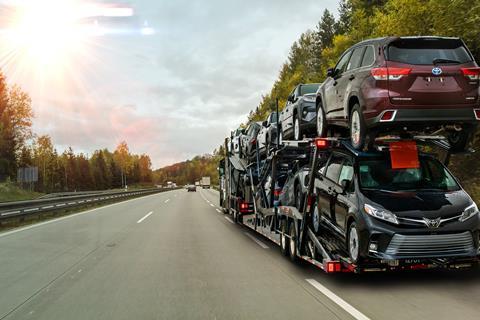
Heavy electric
In terms of the electric vehicles (EVs) it is moving and will be moving in greater numbers there are two main operational concerns for TLS at the moment, according to Pearlman. The first is charging capacity and infrastructure.
“We have to make sure we understand ultimately what the EV volume is going to be and then understanding what the requirement is for the state of charge as we deliver those vehicles to the dealers, she says. “We want to make sure we have the right charging infrastructure to meet that demand.”
The second is impact on the loaded weight and dimensions of the road haulage equipment TLS is using. As EVs are currently heavier than ICE vehicles and sales are trending to the bigger C and D segment vehicles. Pearlman says it is a priority to forecast EV volumes and what that means for transporter capacity and loaded weights.
“We have to look at what impact delivering those vehicles might have on the fleet and make sure we have the right equipment to account for those weight changes and the regulations with which we have to comply,” she says.
Happy medium
Looking ahead, Toyota is working hard to rebuild inventory across the US dealer network and speed up the delivery of vehicles by being more efficient. Leaner inventory has been good for carmaker profits but at the moment high demand is outstripping supply and that is risking customer satisfaction with the brand. Toyota is seeking a happy medium for the customer in which they are getting the vehicle they really want (rather than picking from what is available) without having to wait for months for its delivery.
Finding that happy balance and improving finished vehicle logistics has a number of conditional factors, according to Pearlman. They include directing the right amount of labour and equipment to handle volumes while being flexible enough to deal with inevitable volume fluctuations. Knowing that volumes do fluctuate, it also involves being able to provide accuracy on when a vehicle is coming off the assembly line. There is also the need to remove as much waste from the finished vehicle logistics process, and reduce waiting and lead times.
“Getting that balance right is going to help us as volumes increase but we should be able stabilise at that ideal place where we have the right inventory in the right place at the right time to meet customer demand and to be profitable,” says Pearlman.
A leaner inventory since the pandemic and the need to deliver what was available as quickly as possible has increased visibility in vehicle logistics processes. That exposed some weaknesses in operations and process that TLS was then able to address. Toyota is no longer selling out of stock and every vehicle is precious. That puts scrutiny on the those responsible for vehicle delivery and given its what Pearlman calls an ‘outdoor sport’ any disruption or damage is now quickly picked up on.
However, at the same time the heightened attention on the supply chain has made for closer alignment with other parts of the business, including sales. Logistics was invisible to sales as long as dealers had all the vehicles they needed. Now it is the case that the sales team is more aware of what the logistics challenges are in getting vehicles to market, and TLS is more aware of what the sales team needs to make the company profitable.
“All of that information is helping us develop better processes to overcome those challenges in the future,” says Pearlman.
Missy Pearlman
Missy Pearlman has been with Toyota Motor North America (TMNA) since 1994 and has spent a lot of that time with TLS. Her responsibilities have covered planning and systems, including for truck and rail, as well as being national logistics planning manager.

She became logistics planning manager for TLS out of TMNA’s Kentucky plant in 1999 and also managed production management for TLS at the plant in 2005. In 2008 Pearlman took over as national logistics planning manager supporting 12 vehicle distribution centres (VDCs) across the country, moving on five years later to become senior manager of rail and truck strategy operations, and later as general manager of vehicle processing operations.
In a previous interview with Automotive Logistics Pearlman said she was fortunate to work at Toyota because of the team spirit and emphasis on mentoring at the company.
“Respect for people is a key pillar of The Toyota Way and co-workers appreciate a leader who’s open, honest and addresses problems,” said Pearlman at the time. “By working together as problem solvers, not only do we improve our skills, but we build team work and a strong sense of accomplishment.”
In her role as general manager of TLS, Pearlman’s responsibilities fall into three main areas: inbound port operations, export port operations and Toyota Transport, the carmaker’s in-house trucking operation in California.
Regarding vehicles inbound to the US from overseas production locations, Pearlman oversees five port operations, three of which are run directly by TLS, in Long Beach, Portland and Newark. The actual contracting of the vessel service is done by Toyota Motor in Japan. Pearlman oversees contracts and relationships with stevedoring companies for unloading the vehicles, and the actual vehicle processing at the port.
Of the other two, one is in Benicia, California, operated by Amports, and the other is in Jacksonville, Florida, managed by Southeast Toyota Distributors.
Port processing includes everything from quality checks, accessorisation and legal documentation to prepare the vehicles for delivery to the dealer network.
Finished vehicle exports are moved through 12 ports in North America, the majority of the volume shipped on vessels shared with other carmakers.
“Out of North America we are responsible for contracting with the vessel companies for ocean shipments, as well as contracting with the port processors to prepare the vehicles for shipment,” says Pearlman.
Pearlman also oversees all activity related to Toyota Transport, TLS’ in-house trucking company, with a fleet of 85 trucks.

























![Global[1]](https://d3n5uof8vony13.cloudfront.net/Pictures/web/a/d/s/global1_726550.svgz)




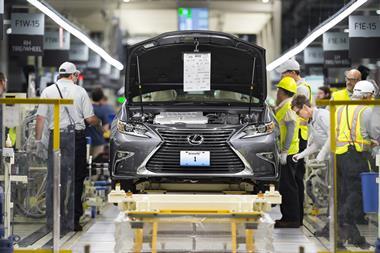








No comments yet